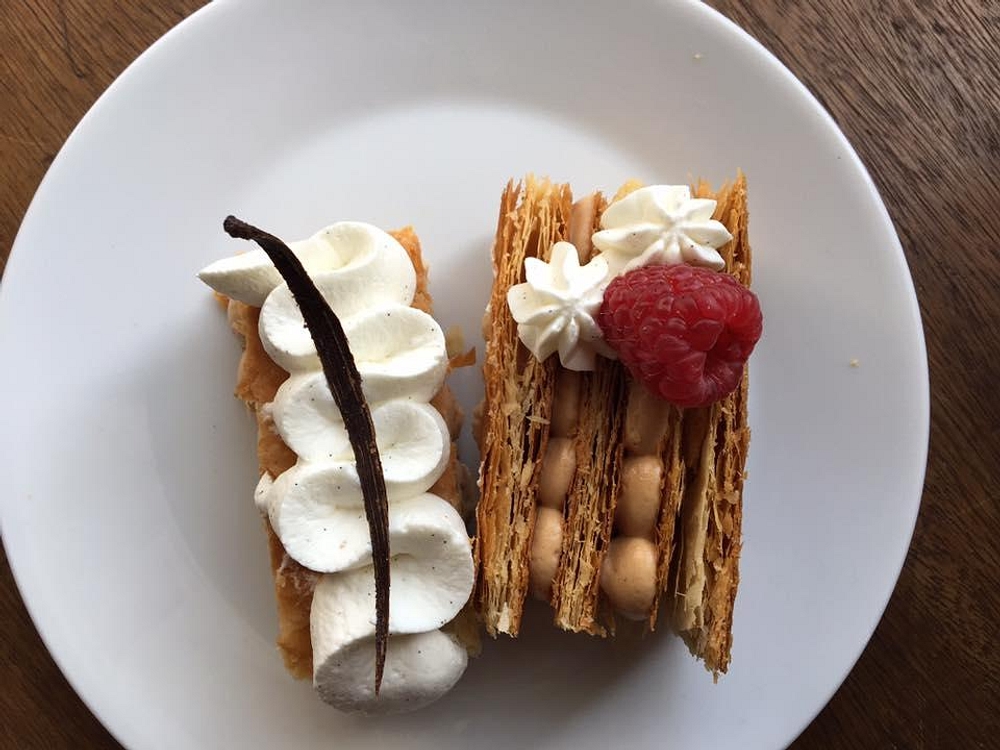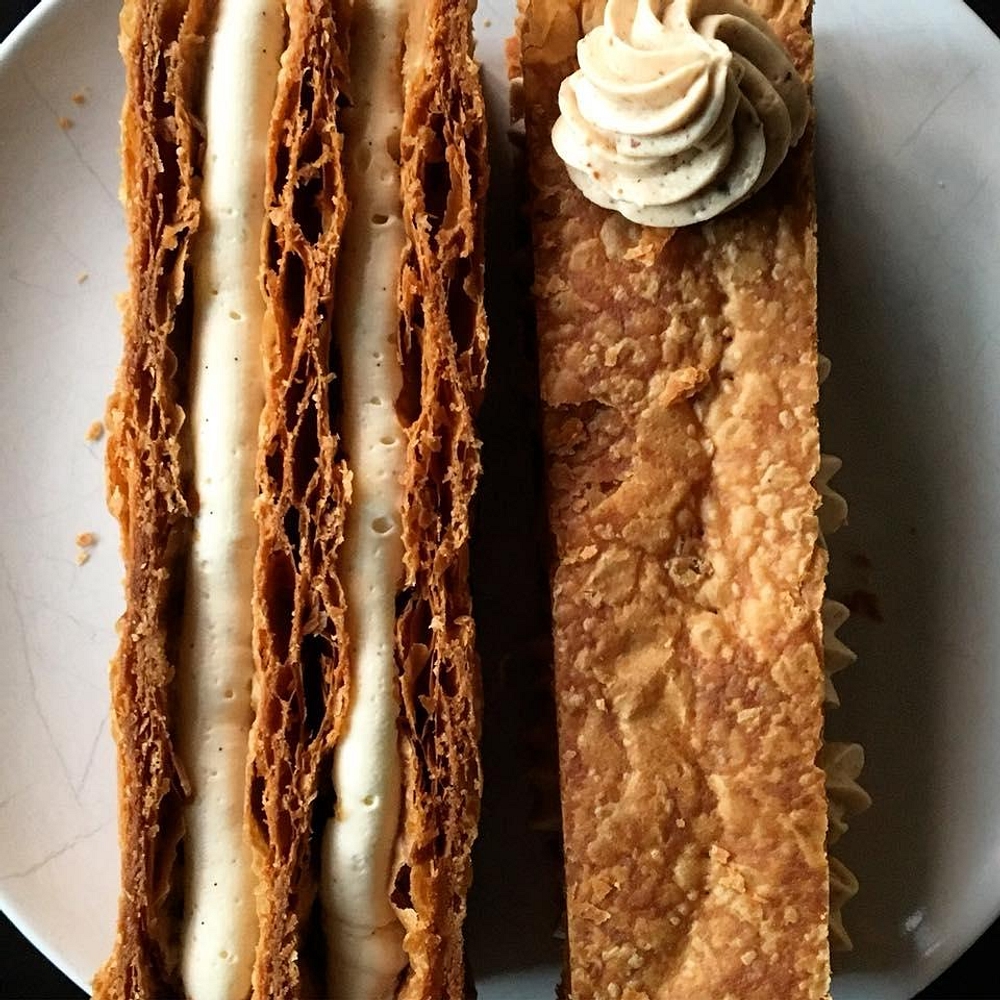Flakey, buttery, a little crispy, Mille-feuille has it all when it comes to taste and texture. Pronounced mill-foy - for those of you wanting to get your French pronunciation on point - this pastry is a real stunner. It translates to a thousand leaves (but you could also translate feuille as layers or sheets) but in short, this is a pastry made of countless super-thin layers of pastry. By cutting the sheets of pastry into shapes, we can then build beautifully elaborate, show-stopping pieces of pastry architecture, with the help of a little pastry-cream or crème pâtissière inbetween.
Mille-feuille is made using puff pastry or Pâte Feuilleté, from which you can make a whole range of treats both sweet and savoury. It also uses a technique very similar to that used to make croissant dough - it's a laminated dough, meaning you layer butter throughout the dough, as anyone who's taken our Croissant Class will know very well!

©LaCuisineParis
When did Mille-feuille start stealing the show? Well, the first official recipe goes back to 1651, when François Pierre La Varenne published the instructions in his cookbook - this is the very first time we see Mille-feuille in print. Traditionally, you should have three layers of pastry with two layers of pastry-cream sandwiched in between. The top can be sprinkled with confectioner's sugar or delicately iced with fondant icing striped with chocolate, which is then combed to give that beautiful distinctive pattern associated with this particular treat.
Still, we enjoy a little rule breaking from time to time, and as you'll see from our Mille-feuille photos in this articles, there's plenty you can do to play around with your decorations, from a beautifully minimalist approach, to swirled piping and eye-popping fresh fruits. Go wild! We're sure François Pierre would wholeheartedly approve.
One thing we know you're wondering - is a mille-feuille a Napoleon? Are they one and the same? And if not - quelle est la difference (what's the difference?)

©LaCuisineParis
Well, after much painstaking research, the consultation of pastry chefs and approximately 6,846 Google searches we can say with confidence: there is no difference. In America and elsewhere seems that the term "Napoleon" takes precedence over mille-feuille, but in all essentials the pastry is the same.

©LaCuisineParis
One thing you do need to know however is that the word Napoleon in this case has nothing to do with the actual Napoleon. It seems unlikely, but it happens to be true! It wasn't his favourite cake, and he neither invented nor promoted it while conquering large swathes of the world. No - in fact, the term "Napoleon" in reference to pastry comes from Naples! Napolitain is the French adjective for the Italian city of Naples. Later, with the rise of France's emperor the link to Napoleon was made.
Feel like learning more about mille-feuille? Why not join us for our All About Puff Pastry class and master the mille-feuille?

